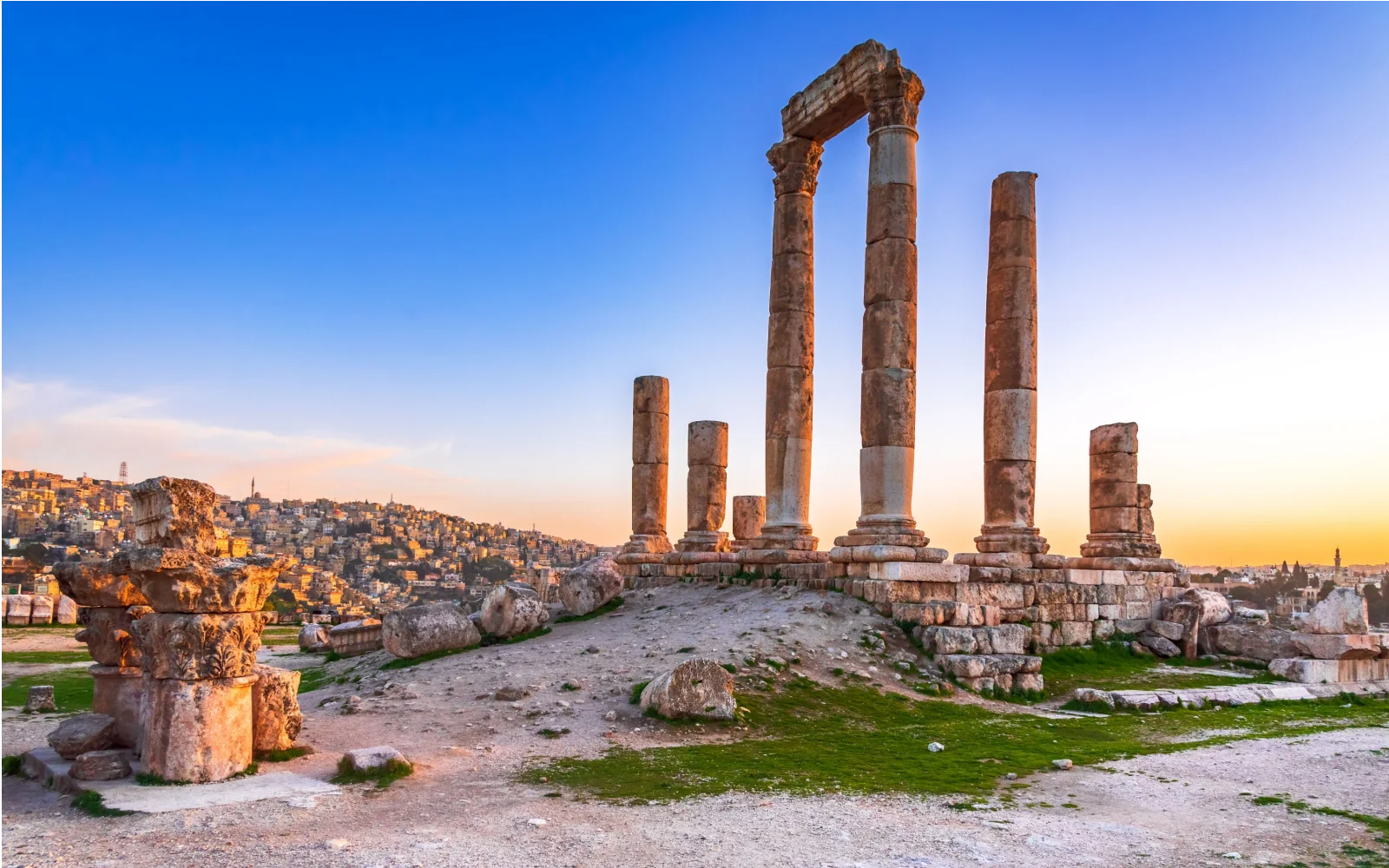What's the best time to visit Jordan?
The best times to visit Jordan are from March to May and September to November, offering ideal weather for hiking, historical site visits, and outdoor activities. Spring, with its comfortable temperatures and wildflowers, is perfect for exploring, while fall provides pleasant conditions for events like The Petra Desert Marathon.
A gateway to scenic natural landscapes, religious sites, and a plethora of authentically-packed historic landmarks, Jordan welcomes travelers curious to see what this Middle-East oasis has to offer.
Whether you’re keen to explore the ancient ruins of Petra or indulge in finger-licking dishes, spending time in Jordan is never a waste of time. And with so many things to do and see once you’re there, one has to wonder — when is the best time to visit Jordan?
The answer depends on your budget and what you hope to get out of your stay. We help you with this and other Jordan-related questions in our detailed guide, so let us be your guide!
The Overall Best Time to Visit Jordan
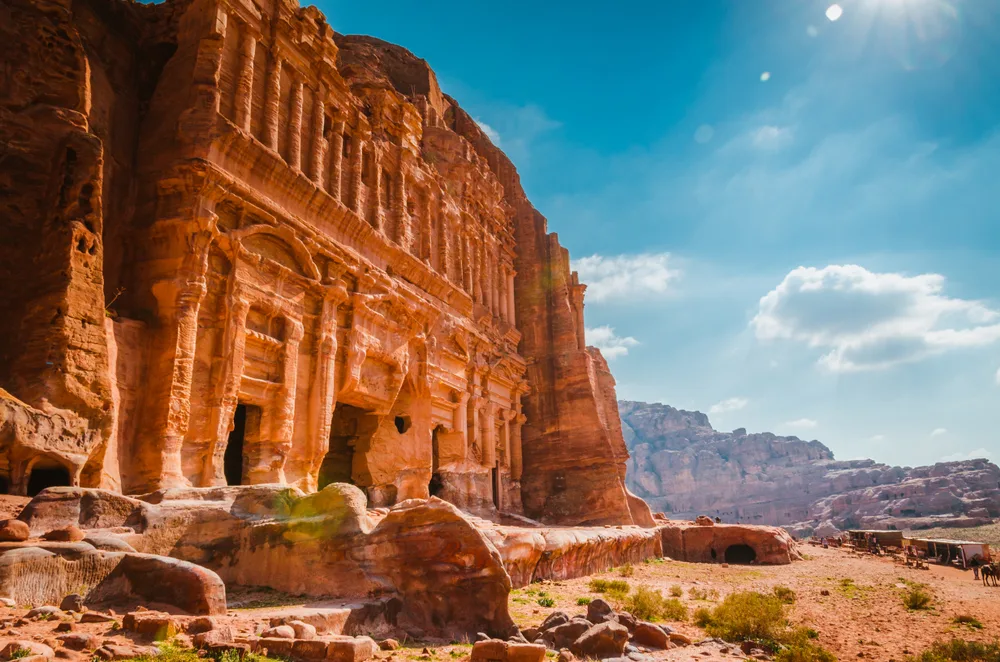
LapailrKrapai/Shutterstock
The overall best times to visit Jordan are from March until May (spring) and the September to November (fall).
These windows of agreeable climate are great for all outdoor activities, including hiking, visiting historical sites, enjoying rooftop bars, or even sleeping under the stars.
March is a fairly comfortable spring month in Amman, Jordan’s capital, with average temperatures varying between 43°F and 63°F. March sees the blooming of wildflowers, including the stunning black iris — an amazing sight you can experience while hiking.
April sees average temperatures ranging between 49.1°F and 72.7°. The month is ideal for enjoying the excitement that comes with spring.
A relatively hot month, May welcomes visitors with temperatures fluctuating between 82°F and 56°F. May travelers are always advised to enjoy the beach before the summer heat arrives with full force.
To add sportish vibes to your Jordan visit, check out the Dead Sea Ultra Marathon. September opens the fall season with temperatures in the range of an average high of 87°F and an average low of 61°F.
September is marked by dynamic activities such as The Petra Desert Marathon and olive harvesting. October has temperatures hovering around 56°F during the day and 80°F at night.
October visitors can attend the Amman Marathon (we know, a lot of marathons!) and see whether the newly-established Jordan Trail Thru-Hike is being organized.
With average temperatures varying between 68°F and 48°F, November is an agreeable month. Weather-wise, the month is ideal for exploring ancient ruins and high-elevation areas.
Finally, note that other visitors will want to take advantage of these months, so get ready for large crowds and high prices. Booking your stay well in advance is also recommended.
Cheapest Time to Visit Jordan
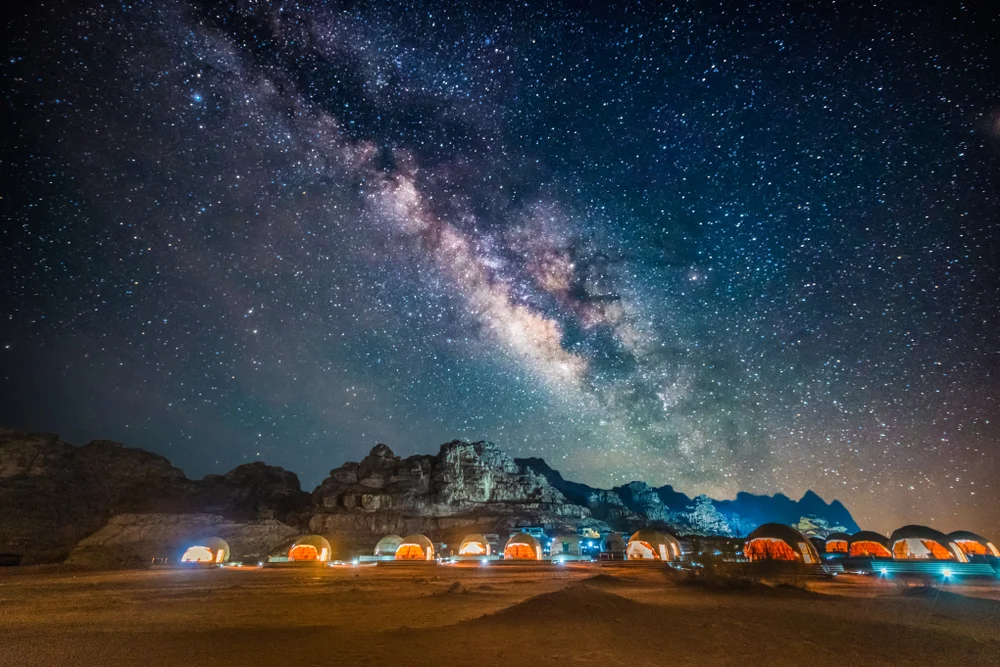
Rayints/Shutterstock
The cheapest time to visit Jordan is during the winter, from December until February. Despite being in the Middle East, the southern and northern highlands in Jordan experience relatively chilly temperatures that keep most visitors.
December sees averages fluctuating between 41°F and 57°F. It’s also the month with the shortest days of the year, with an average of 10h of daylight.
February, though, marks the end of the winter season, with average temperatures varying between 39°F and 56°F. Snow is a very rare occurrence in Jordan, but if it happens, it might just be what’s needed to make your stay even more exciting and special.
Heavy rainfall at this time may lead to tour delays (or worse, cancellations!), so going with the flow is key if you want to have a good time in Jordan.
Finally, if you find yourself in Jordan in February, add the annual Aqaba Traditional Arts Festival and the Azraq Festival to your entertainment list to experience a joyful atmosphere. The former honors Bedouin cuisine, while the latter celebrates handmade crafts, culture, and versatile art.
Least Busy Time to Visit Jordan
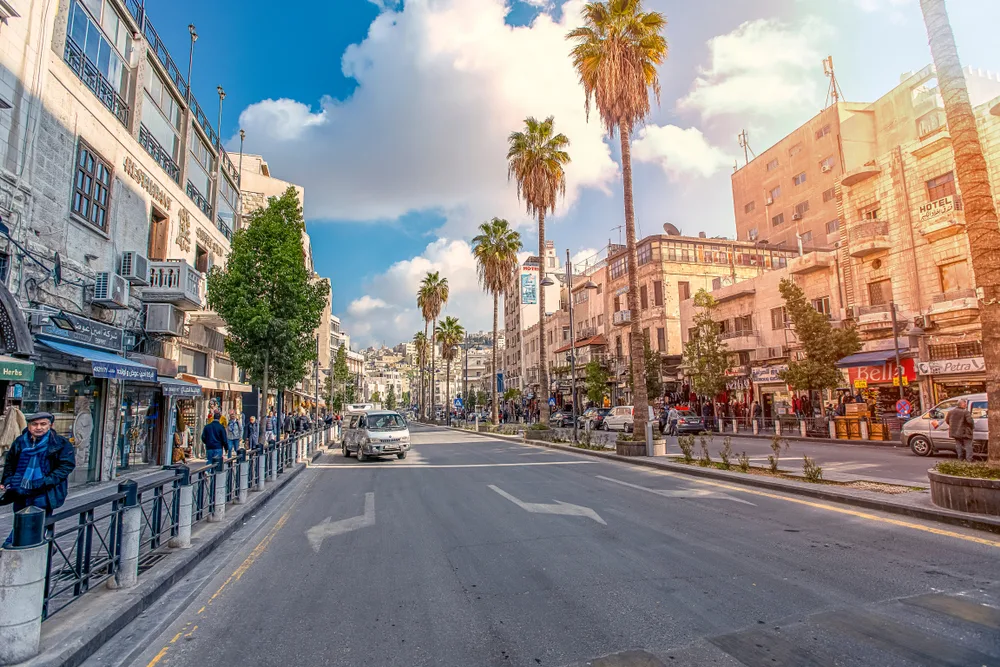
19/02/2019 Amman, Jordan, dirty streets of the Arab capital with a lot of people and cars on a sunny day in Ramadan/Leshiy985/Shutterstock
The least busy time to visit Jordan is in January. A cool winter month, January has average temperatures between 38.6°F and 54.1°F. It’s also the month with the most rainfall, with 63 mm of precipitation on average.
However, there’s nothing that a solid winter-proof plan can’t fix. You could go to museums, attend various workshops, visit churches and marvel at the architecture, and enjoy Jordanian cuisine indoors in some foodie-approved restaurants.
Plus, going to Jordan in January means you get to do all these things without worrying about queues, fully-booked tours, people-packed restaurants, or over-the-roof prices.
Worst Time to Visit Jordan
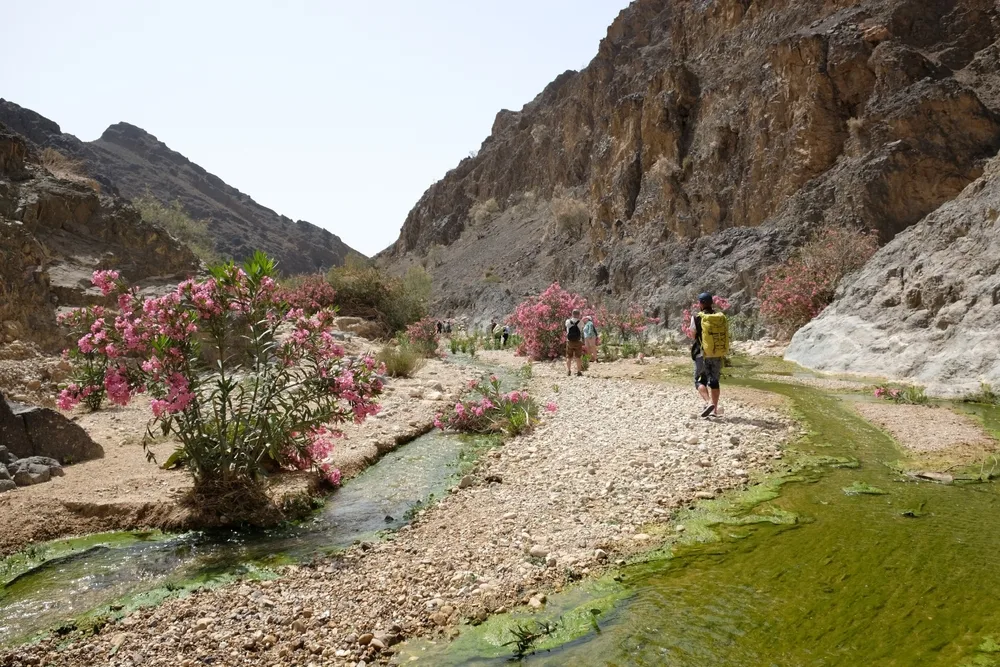
iwciagr/Shutterstock
The worst time to visit Jordan is in the summer, from June until August. During this time, the temperatures are scorching hot, which makes doing anything outside uncomfortable if not impossible.
Jordanian summers can be uncomfortable both for locals and visitors, and more often than not, you may find yourself focusing more on staying hydrated and finding shade rather than exploring the cities, observing ancient sites, or indulging in fun activities.
A hot summer month, June has temperatures between a maximum of 87°F and a minimum of 61°F. It’s also the month with the longest days in the entire year.
August is hands down the hottest month, with average temperatures ranging between 90°F and 65°F. July has temperatures varying between an average high of 89°F and an average low of 65°F.
That said, if you do end up visiting Jordan in the peak of summer, there’s a solution for heat-related issues. For starters, you can begin your day early in the morning, avoid the sun when it’s the hottest, carry water with you at all times, and frequently reapply SPF.
Fruit lovers can take advantage of various summer fruits, such as figs and watermelon, to freshen up their journey. When visiting major landmarks, seek shade in the canyons, explore waterfalls, and find beauty in the summer sweat and heat.
If you’re up for facing the challenge these temperatures bring, however, get ready to attend events such as the annually-held Jerash Festival of Culture and Arts. Being one of the most spectacular summer events, the Jerash Festival of Culture and Arts includes folklore dances, plays, ballets, and operas.
Things to Consider
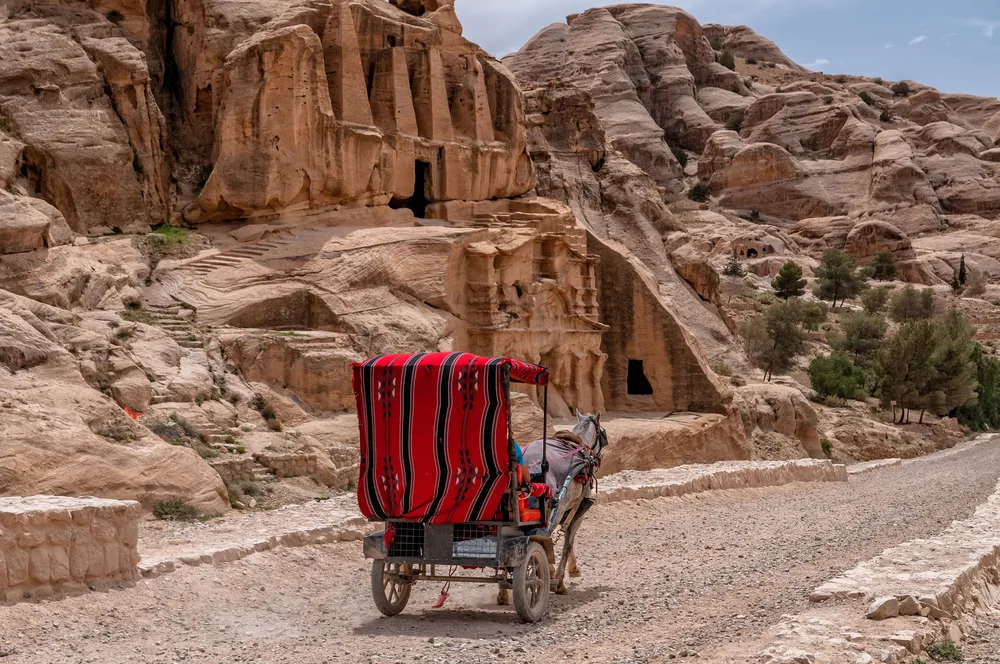
1tomm/Shutterstock
Planning a trip to an exotic country such as Jordan leads to people having their heads in the clouds, but staying grounded is crucial if you want a stress-free trip.
Our tips below should do the trick:
- While the political situation in the country is more or less stable, protests take place from time to time in Amman or other bigger cities. Although these protests are relatively peaceful, travelers should keep up with the latest news, follow media reports, and take some sensible precautions, such as avoiding areas with demonstrations or large, suspicious gatherings. Most protests in the capital, Amman, are said to occur on Thursday evenings at the Prime Ministry compound in the 4th Circle area or on Fridays right next to the Husseini mosque.
- Being recognized as one of the top UNESCO Heritage Sites, Petra attracts a myriad of tourists all the time. Unfortunately, it has strict opening/closing hours, and failing to obey them leads to visitors remaining locked in Petra during the night. Not only is this an unfortunate event, but it also may result in arrest and prosecution.
- Crime is relatively low — most crime includes bag snatching and pick-pocketing. Keeping your valuables protected at all times, and not flashing expensive items should keep you safe.
- Jordan has approximately 80 valleys, or “wadis.” During the country’s rainy season, they experience flash floods. This means that checking the weather conditions before you travel to such places is a must. If you do find yourself in such a situation, however, look for a high point and don’t try crossing the water.
- Being predominantly Islamic, Jordan is quite a conservative country. This means respecting local customs and traditions is non-negotiable if you want a stress-free stay and making sure you don’t end up offending locals or breaking the law. For instance, drinking alcohol on the streets is illegal, but doing so in clubs or bars is fine. There are no official laws prohibiting homosexual acts, but public LGBT behavior isn’t well-accepted, so keeping a low profile is advisable.
So, What’s the Best Time to Visit Jordan?
So, to recap: the best time to visit Jordan is during the March–May (spring) period and the September–November (fall) period.
Whether you end up visiting Jordan when the weather’s pleasant, when the prices take a nosedive, or when the visitors are far and few between, you’re more than likely going to be enchanted by everything this country has to offer. Happy travels!



